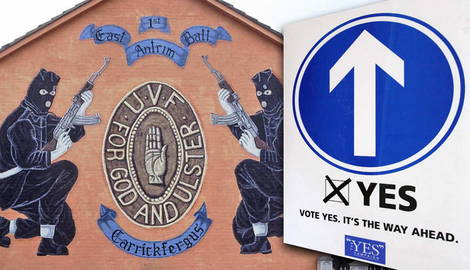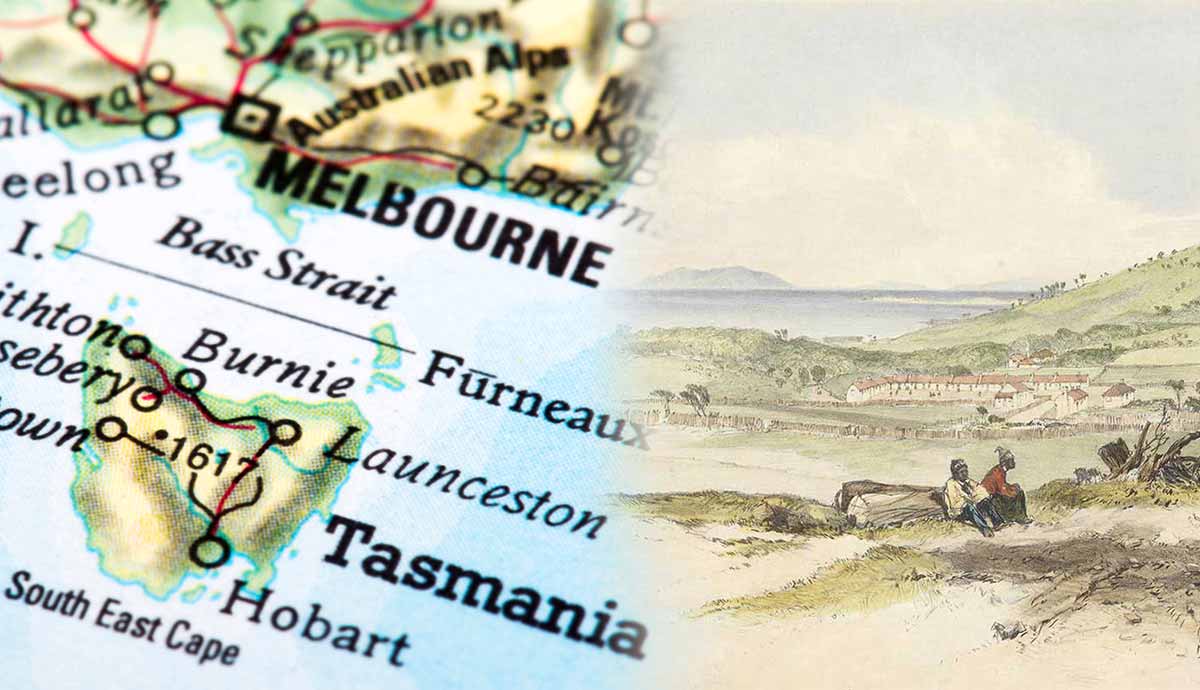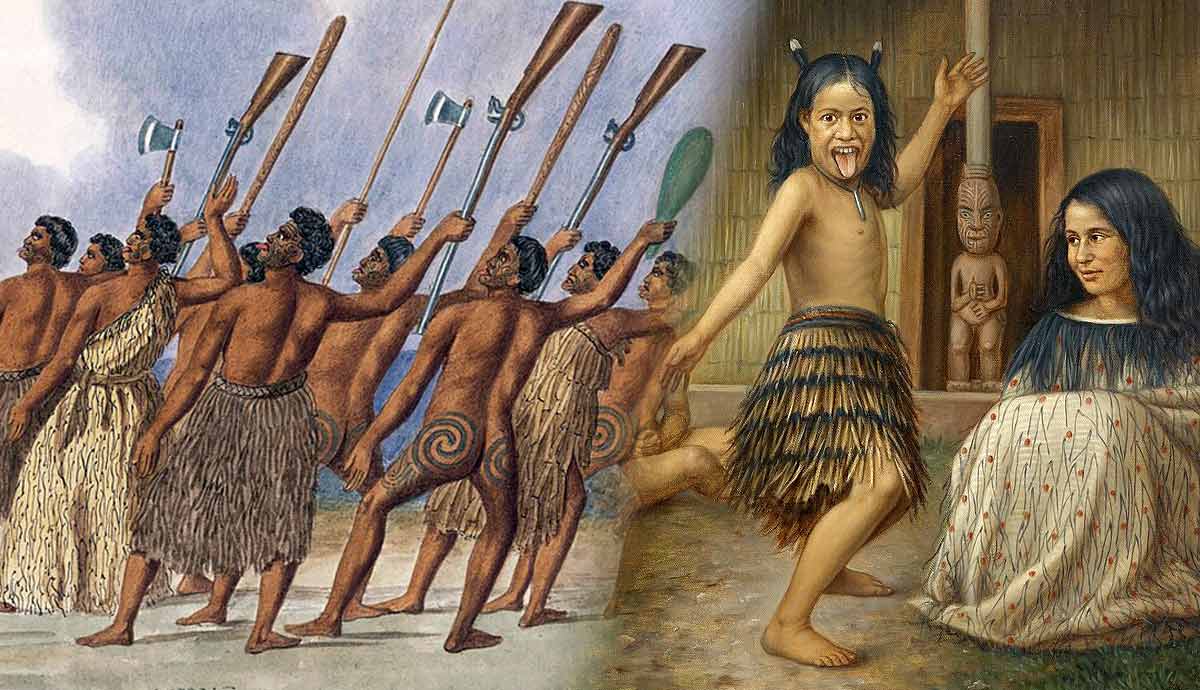
The Good Friday Agreement is arguably one of the most important documents in recent European history. It represents the culmination of years of (mostly secret) talks, compromises, and negotiations between the major parties involved in the Troubles, the conflict that for 30 years, from 1969 to 1998, upended Northern Irish society and drew a clear line between the Protestant and Catholic communities.
Some of the negotiators of the Agreement were closely linked to the armed groups responsible for most of the deaths, on both the Protestant and Catholic sides. Nonetheless, they managed to overcome their differences and drafted an agreement that, 30 years later, remains a guarantee of peace for the people of Northern Ireland.
The Protagonists of the Troubles

To understand the Good Friday Agreement, we need to understand what caused the Troubles and who was involved in the conflict. Here is a list of five terms that the reader will find useful to pinpoint the various paramilitary groups involved in the Northern Irish conflict:
1. Nationalist – Someone (usually a Catholic) who advocates for a united Ireland. The term “republican” is often used as synonymous with “nationalist,” but it’s not that simple: “republican” indicates someone willing to accept and embrace violence to achieve the goal of a united Ireland. The IRA, for instance, is a republican paramilitary group. The Social Democratic and Labour Party, whose leader in 1998, John Hume (1937-2020), played a key role in the peace process is the main nationalist political party in Northern Ireland.

2. Unionist – Someone (usually a Protestant) who believes that Northern Ireland should remain a part of the United Kingdom. The term “unionist” is often used interchangeably with “loyalist,” but this is not exact: since the onset of the Troubles, the term “loyalist” tends to be used to identify unionists who advocate for armed struggle. Paramilitary groups, such as the UDA and the UVF, consider themselves loyalists. Members of the Ulster Unionist Party, on the contrary, tend to call themselves unionists. David Trimble (1944-2022), the leader of the Ulster Unionist Party in 1998, is one of the key players in the drafting and signing of the Good Friday Agreement. In that same year, he was awarded the Nobel Peace Prize alongside John Hume.
3. Irish Republican Army (IRA) – A republican paramilitary organization created in 1919 and led, during the Irish War of Independence, by Michael Collins. Popular support for the IRA waxed and waned during the 1970s and 1980s. Especially in the 1970s many joined the IRA to hit back after events such as the Bloody Sunday, house searches conducted by the RUC, the internment without trial policy, etc. The IRA’s political wing is the Sinn Féin: often accused of being subordinate to the IRA during the Troubles, it played an important role during the peace process and its history is inseparable from the figures of Gerry Adams (1948- ) and Martin McGuinness (1950-2017).

4. Ulster Volunteer Force (UVF) – One of the most important loyalist paramilitary groups, it was established in 1966 in Belfast, in the Shankill neighborhood, and it was responsible for the first killings of the Troubles. Lenny Murphy, the leader of the Shankill Butchers, was a member of the UVF. Leader of the Progressive Unionist Party (and former member of the UVF), David Ervine (1953-2007) argued in favor of the Good Friday Agreement. A similarly important loyalist organisation was the Ulster Defence Association (UDA), established in 1971.
5. Royal Ulster Constabulary (RUC) – The (overwhelmingly Protestant) police force for Northern Ireland first came into being in 1921, after the end of the War of Independence, and it lasted until 2001 when it was replaced by the Police Service of Northern Ireland (PSNI). It is worth remembering that the RUC’s members were overwhelmingly Protestant and that the RUC was often accused by Catholics of sectarianism and collusion with loyalist groups. As a result, it was one of the IRA’s main targets: according to Making Sense of the Troubles, 319 RUC officers were killed during the Troubles (with a peak between 1971 and 1987).
An Overview of the Good Friday Agreement

Peace in Northern Ireland didn’t happen out of the blue. In April 1994, amid the peace talks that would lead to the Good Friday Agreement, the Provisional Irish Republican Army (IRA) announced a ceasefire, which was to run from April 6th to April 8th. Four months later, on August 31st, the IRA declared yet another “cessation of military operations.” This time it lasted until February 1996, when it was called off because the IRA was dissatisfied with the ongoing peace talks. It was reinstated in July 1997, shortly before the signing of the Good Friday Agreement. Seven years later, in 2004, the IRA officially announced the end of its armed campaign.

“A truly historic opportunity for a new beginning,” the Good Friday Agreement was signed on April 10, 1998, in Belfast, Northern Ireland. Hence, the name by which it is colloquially known is the Belfast Agreement.
The Agreement is known by different names among the Protestant and Catholic communities. In Irish, for instance, it is called Comhaontú Aoine an Chéasta and Comhaontú Bhéal Feirste, while in Ulster Scots, the language brought to Ireland by the Scottish settlers in the 15th century, it translates as Guid Friday Greeance or Bilfawst Greeance. The Agreement itself recognizes “the importance of respect, understanding and tolerance in relation to linguistic diversity, including in Northern Ireland, the Irish language, Ulster-Scots and the languages of the various ethnic communities, all of which are part of the cultural wealth of the island of Ireland” (p. 21).

The agreement saw representatives of the British and Irish governments and eight political parties from Northern Ireland coming together to ensure peace on Northern Irish soil. The Northern Irish side included representatives from the two opposing factions, the unionists and nationalists, as well as, most importantly perhaps, their armed groups. Among the unionists, the Ulster Unionist Party, the Progressive Unionist Party, and the Ulster Democratic Party took part in the drafting, with the latter two directly connected to the UVF and the UDA respectively. The same goes for the nationalist groupings: in addition to the Social Democratic and Labour Party, the Sinn Féin, the political wing of the IRA, also took part in the signing of the agreement.
The Good Friday Agreement was signed on April 10, 1998, but it didn’t come into effect until more than a year later, on December 2, 1999. Before this could happen, the people of Ireland and Northern Ireland had to approve it. On May 22, 1998, a referendum was held in Northern Ireland where both Catholic and Protestant populations were called to vote. The majority (71%) of those who voted were in favor of the Agreement. On the same day, another referendum was also held in the Republic of Ireland, where more than 94% of those who voted approved the Agreement.
The Three Strands

The Agreement is written in clear, accessible language that can be easily understood by anyone, regardless of their education level. It is relatively brief, consisting of 32 pages, and is divided into three sections called strands:
1. The first strand is concerned with the establishment and safeguarding of “democratic institutions in Northern Ireland.” This involves creating a democratically elected Assembly comprising 108 members elected from existing Westminster constituencies which will operate “where appropriate on a cross-community basis” (p.7), thus restoring self-government to Northern Ireland and paving the way for power sharing between republicans and unionists. Additionally, the agreement provides for an Equality Commission in charge of monitoring, promoting, and safeguarding equality of opportunities between the Catholic and Protestant communities;
2. The second strand concerns the creation of a North/South Ministerial Council (p. 13), which will bring together the government of Ireland, represented by the Taoiseach and its ministers, with that of Northern Ireland. The North/South Ministerial Council and the Northern Ireland Assembly are expected to be mutually interdependent, “and that one cannot successfully function without the other” (p. 14).
3. The third strand ensures the establishment of a British-Irish Council (BIC), which will include representatives of the British and Irish governments, as well as “devolved institutions in Northern Ireland, Scotland and Wales” to “promote the harmonious and mutually beneficial development of the totality of relationships among the peoples of these islands” (p. 16).
Freely & Democratically Irish

The Good Friday Agreement commences with a Declaration of Support which states that the “participants in the multi-party negotiations believe that the agreement we have negotiated offers a truly historic opportunity for a new beginning.” As they reaffirm their absolute “commitment to exclusively democratic and peaceful means of resolving differences on political issues and our opposition to any use or threat of force by others for any political purpose,” they also affirm “against the background of the recent history of communal conflict” (p. 18) there are eight basic human rights everyone in Northern Ireland should enjoy, regardless of class or religion.
Words like “democratically,” “peaceful,” “freely,” and “equal” abound. In this regard, the Agreement also guarantees the establishment of a new, cross-communal, and independent Northern Ireland Human Rights Commission.
The Agreement condemns any (past, present, or future) attempt at creating a unified Ireland through violence and non-democratic means. As per the Declaration of Support, “it is for the people of the island of Ireland alone, by agreement between the two parts respectively and without external impediment, to exercise their right of self-determination on the basis of consent, freely and concurrently given, North and South, to bring about a united Ireland, if that is their wish, accepting that this right must be achieved and exercised with an subject to the agreement and consent of a majority of the people of Northern Ireland.”
A united Ireland can be achieved only through peaceful and democratic means, with the consent of the majority of both Northern Ireland and the Republic of Ireland.
Reconciliation & Decommissioning

The Agreement doesn’t fail to address the complex issue of reconciliation and it doesn’t downplay it either. It recognizes that “victims have a right to remember as well as to contribute to a changed society,” which would be “the true memorial to the victims of violence” (p. 20). The path toward reconciliation and peace in Northern Ireland can only begin with acknowledging the suffering of the victims of the Troubles and their families, especially the young.
The second step is decommissioning. After 30 years of conflict which saw heavily armed paramilitary groups directly or indirectly controlling the lives of people through violence, Northern Ireland was a society built on the possession of illegally held weapons of all sorts. All participants in the signing of the Agreement “accordingly reaffirm their commitment to the total disarmament of all paramilitary organisations” (p. 22) within two years from the coming into effect of the Agreement.
As mentioned above, the Royal Ulster Constabulary (RUC), the police force for Northern Ireland, was overwhelmingly Protestant. While recognizing the “great suffered and sacrifices” (p. 23) made by RUC members and their families, the Agreement dictates that the new police force for Northern Ireland should be “professional, effective and efficient, fair and impartial, free from partisan political control; accountable, both under the law for its actions and to the community it serves; representatives of the society it polices” (p. 23). It is crucial that the people it aims to protect, both Catholics and Protestants, trust and support it.
The Good Friday Agreement not only brought an end to decades of sectarian violence in Northern Ireland, but in its commitment to human rights, the principle of consent, and reconciliation, it also represents a model for conflict resolution in other war-torn regions around the world.










